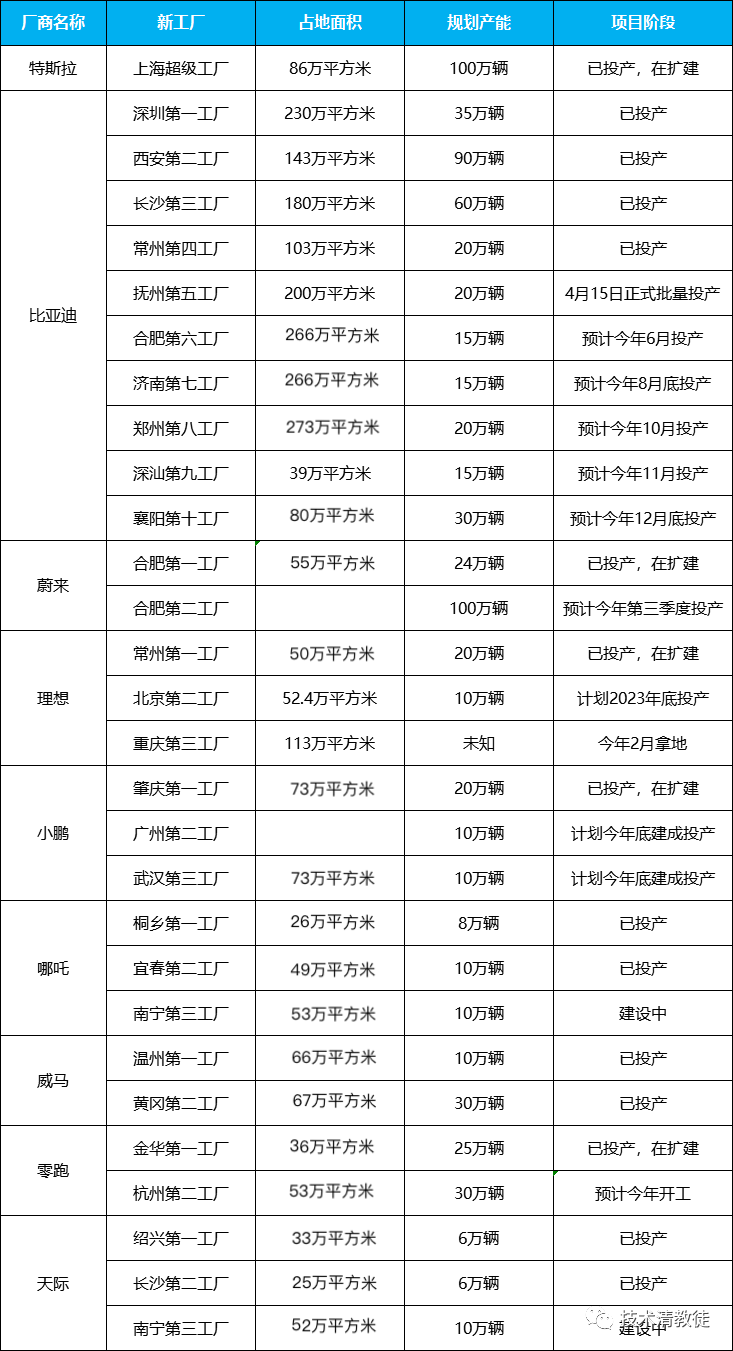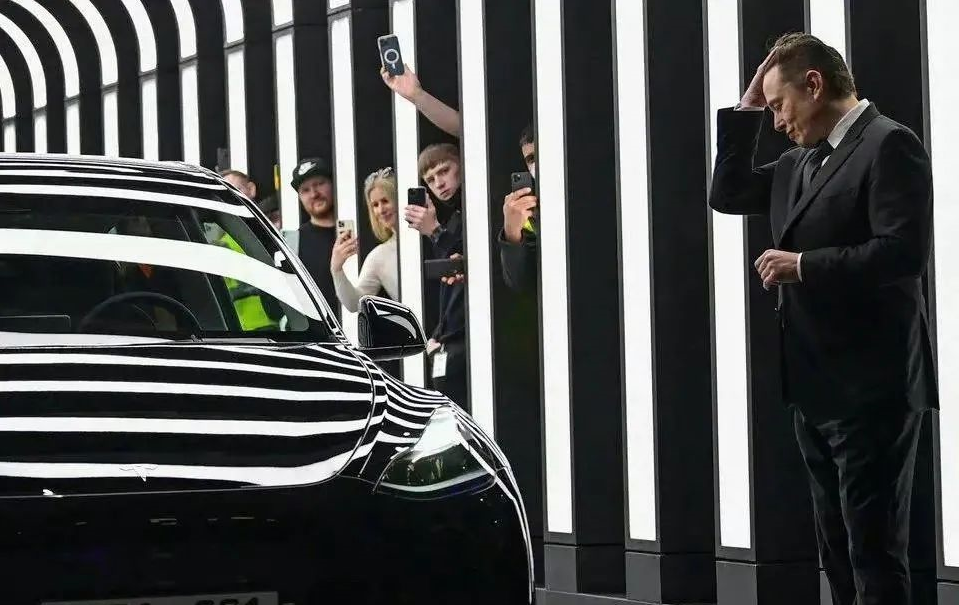Author: Winslow
Full text with 1,311 words
Estimated reading time of 8 minutes
Recently, I was talking with a friend about production lines and he asked me, “What do you think makes Tesla’s production so awesome?”
The next day, during my morning run and meditation, I remembered our conversation. This inspired me to think that, in the past, Tesla’s production had mainly been analyzed from a business model perspective, but lacked a more comprehensive view. Therefore, based solely on various interviews, interpretation, and documentary videos, along with my own understanding, I am going to sort out Tesla’s production here.
First is the concept of “Gigafactory as a product”, which is essentially polishing the super factory as if it is a product.
Since it is a product, it should be designed, researched, optimized, produced, and delivered according to the market demand. As for the production scenario, “market demands” is to understand what the factory will produce in the future, “design and development” is to integrate the production line with the product, “optimization” is to make adjustments to the production line and product during practice in order to steadily increase production, and “mass production and delivery” is to copy and iterate the optimized factory in batches.
Let’s go back to reality and observe how Tesla practices this concept in their factories.
As readers may recall, Tesla started producing Model S at the Fremont factory in 2012, and officially began producing Model 3 in 2017. However, few people know that this Fremont factory is actually a factory jointly established by General Motors and Toyota in 1960, meaning it is quite old. This also implies that Tesla did not participate in the “design and development” of this factory, but instead started their optimization directly. Therefore, Tesla has never referred to it as a Gigafactory, and its output has remained moderate.
However, it is within this factory that Tesla incubated the blueprint for a future Gigafactory.
In the seven years, Tesla installed various sensors on their production line to collect data, and Elon Musk himself went on-site for 1-2 months in each production process. The Tesla headquarters is also adjacent to the factory, providing all means necessary to improve production. All of this is done in order to optimize production rhythm, product design, and identify future Gigafactory bottlenecks from a production perspective.
Seven years have passed since Tesla’s initial production in the Fremont factory, and in early 2019, the Shanghai new factory broke ground. This is Tesla’s first factory which fully participated in “design and development” and is the world’s first Gigafactory. Following that, the Shanghai Gigafactory continued to break its own factory production capacity records, from 200,000 per year to 400,000 per year to 700,000 per year, 900,000 per year, and can even reach 1.1 million per year in the near future.After the following two years, the “Gigafactory as a product” super factory entered the bulk replication stage of “mass production and delivery”. The Shanghai super factory was born in 2020, followed by the birth of the Texas and Berlin super factories in 2022.
Tesla’s production efficiency per unit area can even reach several times that of other manufacturing plants (see comparison in the picture below).

The reasons for this are mainly due to many unusual iterations in Tesla’s production line and corporate culture.
First, there is high integration between the production line and the product. The focus is mainly on producing one product with as little SKU as possible. Even if two products are produced, the components shared between them are as high as possible.
Second, there is a double helix relationship between the production line design and the product design. For example, production steps 1, 2, 3…10, where steps 6 and 7 have a slower production pace than the other steps. Focus on optimizing, processing stations, simplifying processes, and getting 6 and 7 in sync with the other steps. At the same time, the production-oriented R&D team continuously improves product design and increases the maximum production pace for each production step. The famous examples include integrated die casting and simplified harness layout.
Third, there is a flexible production line. However, this flexible production line is not for producing multiple products, but for quickly increasing or decreasing the production process, adjusting the order of processes, increasing bottleneck process groups, and accelerating operating pace. Tesla occasionally shuts down the production line for several days to several weeks to adjust the production line, and the single-shift production capacity often improves after adjustment.
Fourth, focus on the opinions of front-line production staff. The production line staff are the operators who directly participate in the manufacturing process, and their thinking angle on workstation manufacturing efficiency has an important reference value. Establish an evaluation system for production line and process teams for front-line suggestions, try them out and improve them, and promote them.
Fifth, set up production-oriented R&D, close to and thoroughly understand the production line. Tesla’s office and factory are always integrated, and there is only a piece of glass between the office area and the manufacturing factory, whether it is the Shanghai, Berlin, or Texas super factories (new headquarters). The most important thing before answering the question is to read the question carefully. If you are not familiar with the question, how can you solve the problem? Why did Elon Musk go to the factory to sleep on the floor and twist screws? Although he is doing the same job as a worker, his thinking angle is different from that of a production line worker, which lays the foundation for him to understand production and manufacturing in the future. Familiarity and understanding are fundamental for many things.
Sixth, encourage the first-principles perspective. Understanding/reconstructing production lines from the perspective of “outsiders” breaks the paradox of “not knowing the true face of Mount Lu because one is in the mountain”. However, boldly using “outsiders” does not mean not using professionals/seniors. It often adds an angle to analyze the problem and prompts everyone to think about reducing the drawbacks of path dependence as much as possible to find better solutions. Free competition often brings innovation and efficiency, so the perspective of “free competition” is also needed to view things.# How to Do Things Right is Not the Point
The point is “how to find the right thing to do, and concentrate resources and efforts to do it well.”
Join me in iteration to further understand Tesla and gain more interesting perspectives.
This article is a translation by ChatGPT of a Chinese report from 42HOW. If you have any questions about it, please email bd@42how.com.
